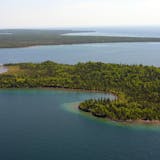Last Saturday was a day some people living in and near Appleton, Minn., thought might never come. But it did, and a gathering in that town, population about 1,400, near the state's western border with South Dakota, demonstrates once again the power of persistence when natural resources and their conservation are at stake.
Among those on hand was Sen. Amy Klobuchar, D-Minn., whose help in Washington was crucial to the milestone being celebrated. The hard work of many others also was important, including that of local residents, from county sheriffs to small-town mayors, as well as officials from the state Department of Natural Resources (DNR) and a raft of concerned conservation groups.
At issue was Marsh Lake, all 5,100 acres of it, whose average depth is less than 3 feet.
Throughout most of recorded time, Marsh Lake was an oasis for all manner of migratory birds, especially ducks and shorebirds, as well as, more recently, Canada geese and white pelicans.
That was until the 1930s, when, for reasons that made sense at the time, a dam was built at the lake's outlet as part of the Works Progress Administration, or WPA — a Depression-era program intended to give people jobs. The dam was one of three built at the time on the Minnesota River to control flooding.
As part of the project, the Pomme de Terre River was rerouted to flow into Marsh Lake upstream of the 1,200-foot-long dam.
Taken together, the dam and the Pomme de Terre's changed course acted as a double whammy on Marsh Lake:
Where once lay a huge, shallow stretch of vegetation-rich water whose level fluctuated with the weather — completely dry during drought to overflowing at times during spring rains — now sat a stagnant cesspool of turbidity whose most plentiful resident species were common carp.


